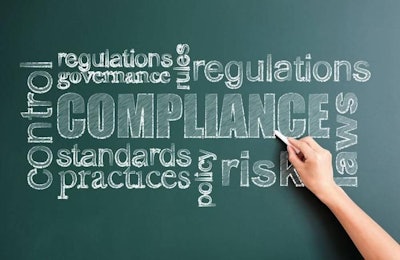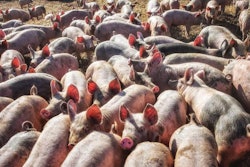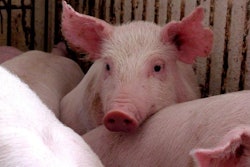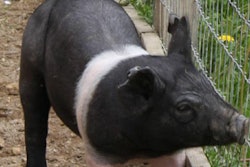
Nearly two years after its original proposal, the FDA’s final rule for preventive controls for animal food of the Food Safety Modernization Act (FSMA) commanded much attention at the National Grain & Feed Association (NGFA) and Pet Food Institute (PFI) Feed and Pet Food Joint Conference, held in Columbus, Ohio, September 29 – October 1.
The final requirements for current good manufacturing practices (CGMPs), hazard analysis and risk-based preventive controls were shaped by guidance from industry stakeholders during the comments period.
“We really attuned to the needs of the feed industry — and so far we’ve gotten fairly positive feedback on the changes,” says Dan McChesney, director of the office of surveillance and compliance in FDA's Center for Veterinary Medicine.
Based on McChesney’s presentation and NGFA’s vice president of feed services David Fairfield’s comments on the topic, the following outlines a few key take-aways from the final rules.
The role of the qualified employee
The preventive control rule emphasizes the importance of competent employees manufacturing feed and overseeing safety protocols. The new training requirement calls for qualified employees perform their assigned duties. Such qualifications can come in the form of education, training or experience or a combination of the three. These individuals must have documented training in principles of animal food hygiene and safety.
“We expect a higher level of training from the folks doing the mixing,” McChesney says. “We’ve been asked what will qualify someone and it’s really a mix of experience and education. We would look to [feed mill management] to say this is an appropriate individual. Who should identify the hazard? Well, someone who is knowledgeable of it.”
The rule does not prescribe the content of the training or its frequency, Fairfield noted in his overview of the new regulations, but the FDA “expects training to occur before working in production operations and periodic refresher training thereafter.”
CGMPs establish standards
McChesney feels the revised CGMPs align with feed industry standards. According to Fairfield, the new regulations require facilities address issues such as hygienic personnel practices and training; facility operations; maintenance; sanitation; equipment design, use and maintenance; processes and controls; and warehousing and distribution.
According to McChesney, the CGMP requirements are “less prescriptive while maintaining the baseline to protect all animal feed, pet food and food for food animals.”
Hazard analysis and risk-based preventive controls
Each facility is required to implement a written feed safety plan that focuses on analyzing and preventing hazards. The plan must be prepared by a “preventive control qualified individual,” one who completed a training program or gained on-the-job experience.
“The feed safety plan entails everything from hazard analysis to recall procedures,” McChesney says. “Within the feed safety plan, one must identify, evaluate and determine how to prevent potential hazards. Hazards that require a preventive control — previously called a significant hazard — require actions to ensure the hazard has been significantly minimized or prevented, including process controls, sanitation controls, supply-chain controls and a recall plan.”
Potential hazards are classified as those that are reasonably likely to occur within a facility, or to the manufactured product, and includes hazards likely to result in a severe illness or death for humans or animals.
Supply-chain control programs
Feed manufacturing facilities must have a risk-based supply chain program to ensure hazards in raw materials and other ingredients are controlled before the animal feed manufacturer received the product.
Supplier verification activities include onsite audits, sampling and testing, and review of relevant food safety records. Activity and frequency is based on the nature of the hazard where it is controlled and supplier performance.
“If you’re controlling it, you have to make sure you’re monitoring it,” McChesney says.
Exemptions, deadlines based on business size
The FSMA regulations apply to all domestic and foreign facilities that manufacture, process, pack or hold animal food; however, depending on the size of the operation, some facilities are exempt from the full requirement of the rules. Specifically, feed producers who qualify as “very small businesses,” i.e., companies averaging less than $2.5 million in annual sales.
In order to achieve this status, the facility must attest to its size, but ensure “hazards have been identified and that preventive controls have been implemented or are being monitored” or attest that it is “in compliance with an applicable non-federal feed safety law.”

Depending on the size of the operation, compliance with the CGMP and Preventive Control final rules vary.
The operation’s size also affects compliance deadlines. The compliance phase-in periods are broken into three categories: very small, small and large firms. In the end, a 1-2-3 year policy was assigned for CGMPs and a 2-3-4 year policy for implementation of hazard analysis and preventive controls.
According to the American Feed Industry Association, 80 to 90 percent of 19,000 U.S. animal feed facilities will fall under the small business (less than 500 employees) category.
Five additional FSMA rules will be released by March 31, 2016.
For more information about FSMA, visit www.fda.gov/fsma

















